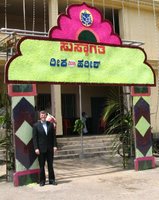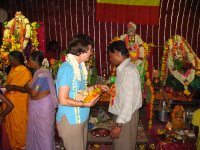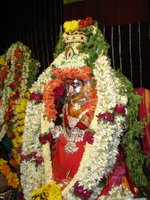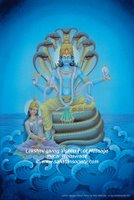A Tale of Two Wives
 The Sunday morning headlines on 30-April greeted us with grim news that the Taliban in Afghanistan had kidnapped and threatened to kill an Indian telecommunications engineer. A spokesman indicated that K Suryanarayana would be beheaded if the Indian Government did not withdraw all Indian citizens working in Afghanistan within 24 hours.
The Sunday morning headlines on 30-April greeted us with grim news that the Taliban in Afghanistan had kidnapped and threatened to kill an Indian telecommunications engineer. A spokesman indicated that K Suryanarayana would be beheaded if the Indian Government did not withdraw all Indian citizens working in Afghanistan within 24 hours.Tuesday’s paper confirmed another lost life. As with other tragic deaths that become public, we are given full view of the personal lives of ordinary citizens in the newspapers. No ink is spared to “enlighten” readers of all the intimate details of the lives so recently lost.
 Suryanarayana was from the Hyderabad area of Andhra Pradash. He was 41 years old, married for 15 years to K Manjula and the father of three children, two daughters and a son. He had worked for Tata Teleservices for 5 years before taking up employment in January with Al Moayed, a Bahraini telecom company.
Suryanarayana was from the Hyderabad area of Andhra Pradash. He was 41 years old, married for 15 years to K Manjula and the father of three children, two daughters and a son. He had worked for Tata Teleservices for 5 years before taking up employment in January with Al Moayed, a Bahraini telecom company. We expected a few more days of ink regarding funeral arrangements, government pronouncements of tough action and the detailing of a monetary relief package to the widow. The story could have ended there. We came to learn, however, that upon the arrival of her husband’s body in Hyderabad, his wife carried out an earlier threat of suicide by drinking toilet cleaning fluid.
We expected a few more days of ink regarding funeral arrangements, government pronouncements of tough action and the detailing of a monetary relief package to the widow. The story could have ended there. We came to learn, however, that upon the arrival of her husband’s body in Hyderabad, his wife carried out an earlier threat of suicide by drinking toilet cleaning fluid.The suicide appeared to be sparked by grief and the appearance of another woman, named Swapna, who claimed to be the slain engineer’s second wife. Swapna had come to the home of the grieving family, announced her claim and demanded acceptance into the family and a share of the relief package. Swapna produced a nine month-old daughter and photos of her marriage ceremony as proof of their “love marriage.”
 The only details to be unwound would be how employer and government compensation packages would be awarded. Who would receive the compensation? Would it be the grieving widow lying in a hospital bed or the grieving widow holding the nine month-old?
The only details to be unwound would be how employer and government compensation packages would be awarded. Who would receive the compensation? Would it be the grieving widow lying in a hospital bed or the grieving widow holding the nine month-old?The next day’s paper gave us another glimpse into southern Indian life. It appears that having multiple wives in Andhra Pradesh and the neighboring state of Tamil Nadu is not uncommon. Bigamy in Tamil Nadu, although illegal today, has historic roots. Bigamy in Tamil Nadu is referred to as “Chinna Veedu” meaning small or second house.
In Andhra Pradesh, the home of the killed engineer, bigamy is less a tradition, but among the rich, carries a social status. In our state of Karnataka, Chinna Veedu is not prevalent. That is not to say the powerful do not “keep” extra women. One former state Chief Minister was said to have a wife and mistress under the same roof. It was the mistress who greeted house guests.
As for the division of the relief package, the second wife has no legal standing and thus no access to the relief package. But since second wife and Suryanarayana were married according to Hindu rites, her small daughter is entitled to a share of the compensation.
























